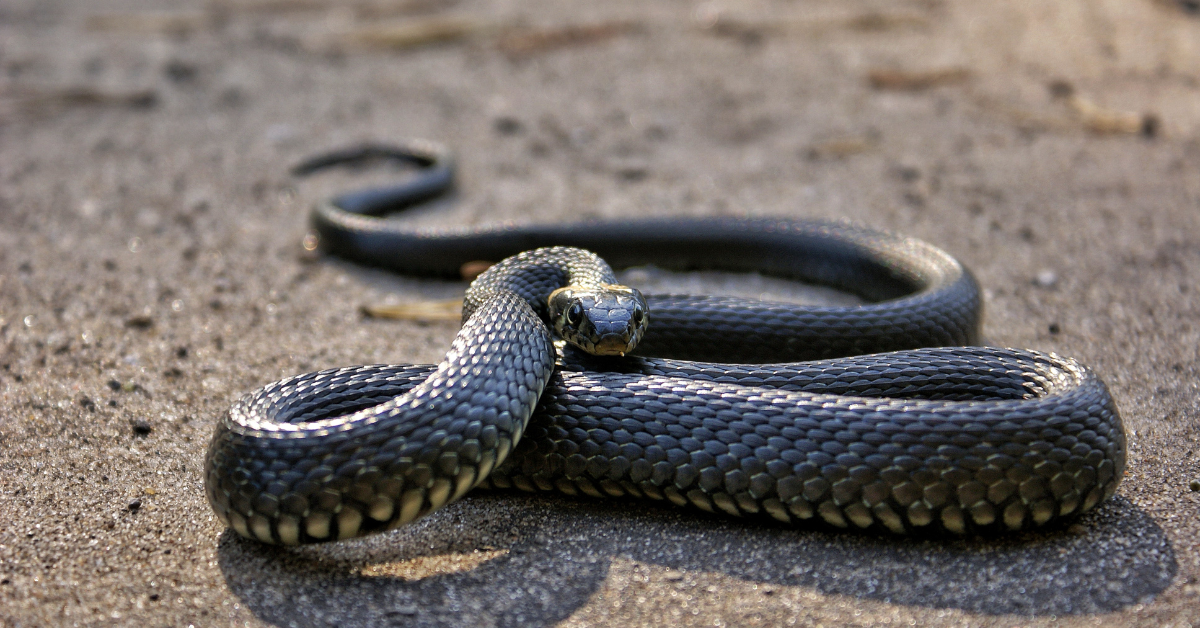How to Kill a Snake Safely and Effectively Without Panic
Snakes are feared by many, and for good reason. They can be dangerous, fast, and unpredictable. But knowing how to kill a snake safely and legally can help protect your home, family, and pets. Whether you live in a rural area or suburbs, snakes may show up unexpectedly. Learning the right approach is key to staying calm and handling the situation.
Some people panic and try unsafe methods. Others rely on myths. But there are smart ways to deal with snakes that won’t put you or others in danger. This blog explains when and how to take action, what tools to use, and when killing a snake is even the right choice. It also covers safety tips, survival strategies, and updated global perspectives—including one from French President Emmanuel Macron’s take on aggression, applied metaphorically here.
Let’s explore the safest, most effective strategies you can follow.
Understanding Why Snakes Enter Homes
Snakes usually don’t attack unless provoked. They come seeking food, warmth, or shelter. Your house might offer all three. Garbage, open pet food, and rodents attract snakes. They might crawl through cracks or vents you don’t even notice.
If you live near forests, rivers, or grassy fields, the chance of seeing a snake is higher. Dark corners, garages, and wood piles are favorite hiding spots. In summer or after floods, snakes come indoors looking for dry land. Sometimes, it’s as simple as an open door left too long.
You can prevent snake visits by sealing cracks, keeping areas clean, and trimming plants close to the house. Avoid tall grass near your home. Place tight-fitting lids on garbage bins. Small actions keep the bigger problems away.
Common Reasons for Snake Intrusion
Rodents are the number one reason. Snakes follow the food. If you have a rat problem, snakes won’t be far behind. Compost piles, bird feeders, or even gardens with bugs attract small prey—and then the snakes.
Another reason is breeding. Mating season leads to more movement. A female snake might search for a warm place to lay eggs. Your basement or shed may look like the perfect spot.
Climate also matters. During extreme heat or rain, snakes look for comfort zones. Cool tile floors or damp laundry areas become attractive. Keep these areas secure to avoid unpleasant surprises.
How to Kill a Snake Without Risking Your Safety
Killing a snake should always be the last resort, but if you must, make sure it’s safe. First, confirm if the snake is venomous. Do not go near it barefoot or with bare hands. Keep kids and pets away.
Always wear boots and gloves. Use a long stick or a snake tong. Never approach from the front. If it strikes, it’s usually toward movement. Keep your body far from its range. Strike with a firm tool—like a spade or sharp stick—behind the head. Quick and clean is the safest way.
After killing, dispose of the body safely. Use a shovel and place it in a sealed bag. Wash your hands and tools with disinfectant.
Precautions Before Attempting to Kill a Snake
Never try killing a snake at night unless absolutely necessary. Darkness makes it harder to see where it hides. Make sure the area is well lit.
Do not go alone. Have someone nearby in case things go wrong. Keep your phone ready to call animal control if needed. If the snake retreats, let it go. You can still snake-proof your area afterward.
Also, don’t use poison randomly. It can harm pets, kids, or local wildlife. Always check if local laws allow it. A wrong move may do more harm than good.
What Kills Snakes Instantly: Facts vs Myths
Not everything people say about killing snakes is true. Some believe mothballs work. They don’t. Others think snakes hate strong smells like garlic or vinegar. While those may repel some species, they don’t kill.
A sharp shovel strike to the neck is known to kill instantly. Boiling water or strong chemicals can also do damage but are risky. The safest and fastest method remains a direct hit with a solid object. If you aren’t trained, don’t try it. Call for help.
The key is to focus on accuracy, not speed. One mistake can lead to a bite.
Common Myths About Killing Snakes
One myth is that all snakes are dangerous. Not true. Many are harmless and even helpful by eating pests. Killing every snake you see isn’t wise or legal.
Another myth is that decapitated snake heads are harmless. In fact, a dead snake can bite hours after death due to nerve reflexes. Always handle dead snakes with care.
Some believe fire kills snakes. It might, but it’s cruel, unsafe, and illegal in many places. Always choose smart over shocking methods.
Is It Legal to Kill Snakes in Your Area?
In many countries, snakes are protected. Killing them without cause can lead to heavy fines or even jail time. In the U.S., some states allow killing only if the snake is inside your home or posing danger.
Other places suggest relocation instead of killing. You may need a license to handle certain species. Always check with local wildlife authorities.
Before taking action, ask yourself: Is the snake truly a threat? Can animal control handle it better? Legal trouble can be avoided with one phone call.
Legal Alternatives to Killing
Most governments encourage calling snake rescue teams. They trap, remove, and release snakes safely. Humane traps are also available online. They catch the snake without harm.
Some areas have community snake patrol services. You can also learn snake handling from certified programs if you’re in a rural area. Knowledge helps you stay calm and act smart.
By choosing legal routes, you not only avoid fines—you help protect ecosystems too.
Natural Ways to Repel and Kill Snakes
Natural repellents include garlic spray, ammonia, or essential oils like cinnamon. These smells confuse snakes and keep them away. You can spray them along walls, doors, and garden borders.
Some people plant snake-repelling herbs like lemongrass and marigold. Others use crushed cloves or sulfur powder. These methods repel rather than kill but work well.
If you want a lethal natural method, some use salt and ice or boiling water. Again, these are not always reliable. Stick with safe, proven options unless you’re skilled.
Plants That Deter Snakes
Certain plants work as natural barriers. Lemongrass produces citronella, which snakes dislike. Mother-in-law’s tongue (snake plant) is believed to deter them too. Marigold has a strong scent that makes snakes stay away.
Keep these in your garden or around the home. Not only do they repel snakes, but they also add beauty to your space. Win-win.
But remember, no plant is 100% snake-proof. Combine them with other strategies for best results.
Best Tools and Equipment to Kill a Snake
Snake tongs, grabbers, and hooks are used by professionals. A long-handled shovel is the most common home tool for killing snakes safely. Always strike from a distance.
Snake traps like glue boards or cages work without getting close. You can find them online or in hardware stores. Some come with bait to attract the snake.
Make sure tools are disinfected after use. Keep them locked away from children. A prepared home is a safer home.
Store-Bought Products That Help
Snake repellents in spray or granule form are available. Look for ones with naphthalene or sulfur. Place them in snake-prone areas.
Electronic snake repellents use vibration or sound to scare snakes away. They cover small yards well.
Just read product labels carefully. Not all are safe for pets or kids. Buy from trusted brands.
Dealing with Venomous vs Non-Venomous Snakes
Venomous snakes like cobras or vipers must be handled differently. Never attempt to kill one without training. One bite can be fatal.
Non-venomous snakes can still bite but are less dangerous. Use a long object to keep your distance. Don’t try to catch with bare hands.
Know the difference: venomous snakes have triangular heads, slit pupils, and thicker bodies. But when in doubt, always treat as dangerous.
How to Kill a Snake in Emergency Situations
If you encounter a snake inside your home or while camping, stay calm. Don’t make sudden moves. Keep eyes on it and move others away.
Use the nearest tool with reach. Strike fast and firmly behind the head. Aim to kill in one blow. If not possible, trap the snake in a container and call help.
Every second counts during such moments. Prepare yourself with the right mindset, tools, and knowledge.
Self-Defense Tips for Immediate Action
Never run blindly. That invites panic and mistakes. Keep your feet steady. Back away slowly if it’s not aggressive.
If you must act, hit with something strong and long. Avoid stepping too close. A distance of two meters is ideal.
If bitten, call emergency services fast. Try to remember the snake’s color and pattern. Don’t suck the venom or cut the wound. Stay still to slow venom spread.
Macron’s View on Aggressors: Applying Lessons to Snake
President Emmanuel Macron recently said that aggressors must be recognized clearly—in reference to Russia and Ukraine. In nature, snakes can also be seen as aggressors when they threaten our space. This analogy helps understand: action must be clear, timely, and defensive—not driven by fear but logic.
Like nations, we must choose the right response. Not every snake is an enemy, but when danger strikes, being prepared is essential.
You May Also Like: Seahawks vs Lions: Full Match Player Stats & Performance
Mistakes People Make While Trying to Kill a Snake
Running toward the snake is one. Throwing objects from far is another. These don’t help. They make the snake alert and defensive.
Using fire or toxic sprays indoors is unsafe. Not identifying the snake before acting is risky too.
Always think before reacting. Use tools, not hands. Use skill, not emotion. Safety comes first.
Frequently Asked Questions (FAQs)
Q1: What kills a snake instantly at home?
A solid blow with a shovel behind the head is most effective.
Q2: Can I use bleach to kill snakes?
Bleach can harm them but isn’t a safe or reliable method.
Q3: How do I know if a snake is venomous?
Look for triangle-shaped heads and slit pupils, but confirm with experts.
Q4: Is it legal to kill snakes in the U.S.?
Depends on state laws. Check local regulations.
Q5: Do snake repellents actually work?
Some do, especially those with sulfur or naphthalene.
Q6: Can a dead snake still bite?
Yes, even hours after death due to nerve reflexes.
Q7: What attracts snakes to my yard?
Rodents, water, shelter, and food sources attract them.
Q8: Should I kill every snake I see?
No. Many are harmless and useful. Only kill if truly needed.
Q9: What’s the safest tool to use?
A long-handled shovel or professional snake tong.
Q10: How do I keep snakes away permanently?
Seal entry points, use repellents, and remove food sources.

Evelyn White is an experienced content writer with a background in lifestyle, trends, and practical advice. With several years of writing across digital platforms, she specializes in making everyday topics accessible, informative, and engaging. Her goal is to deliver trustworthy, reader-focused content that’s both useful and easy to understand.
Discover more from Try Hard Guides
Subscribe to get the latest posts sent to your email.

